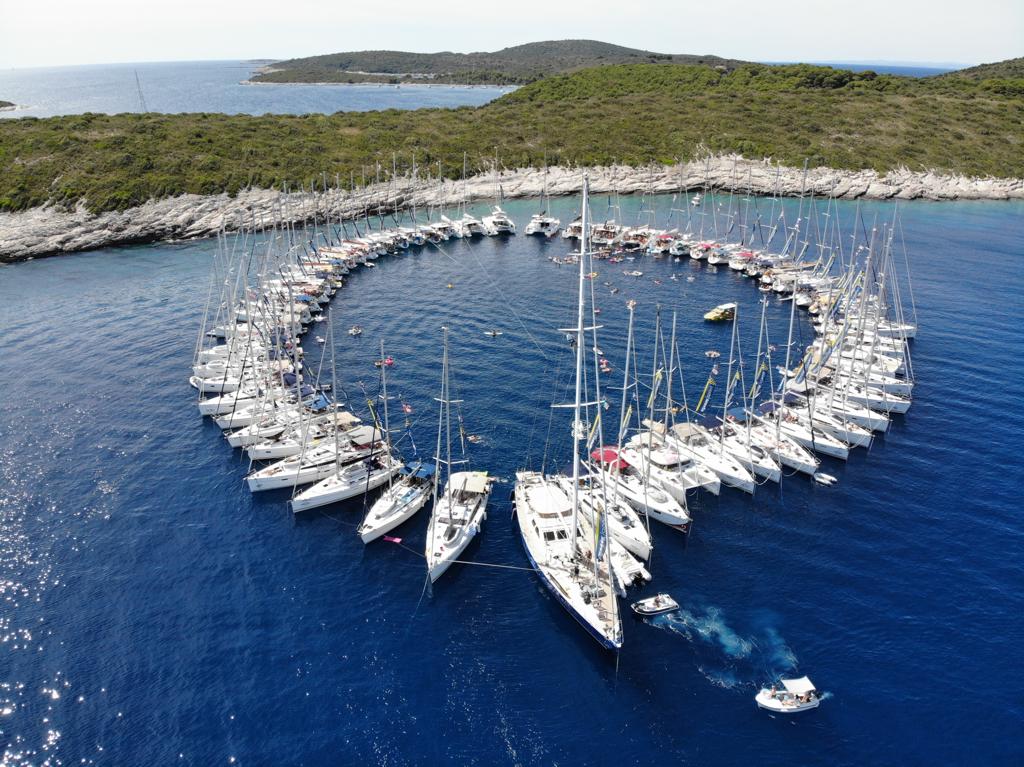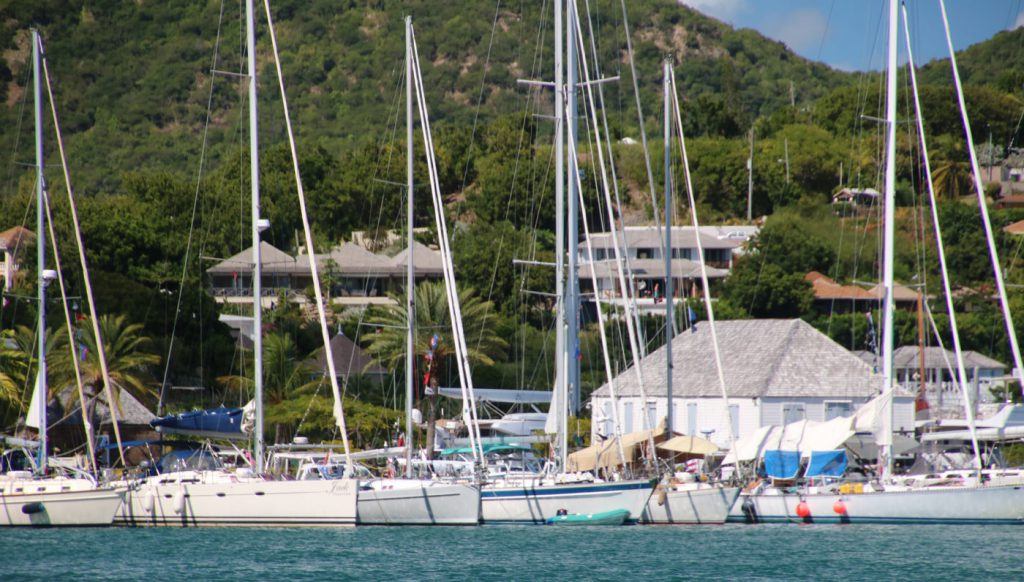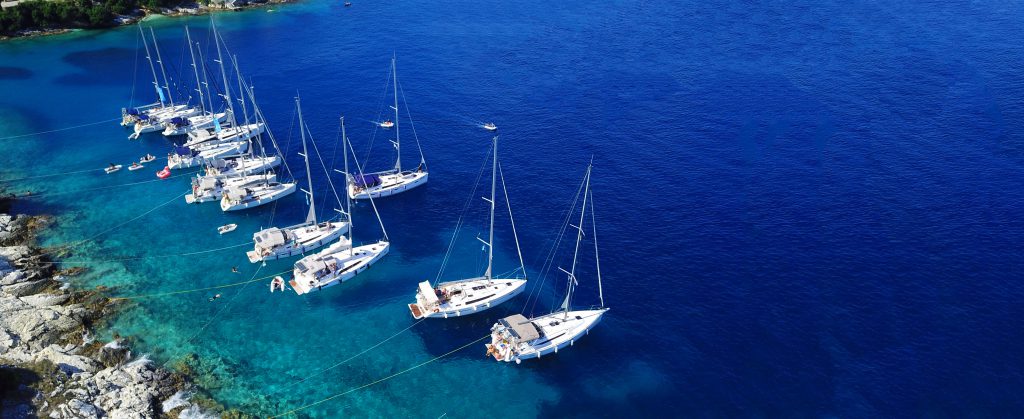Joining a Cruising Rally
December 12th, 2020 by team

by B.J. Porter (Contributing Editor)
We did our first offshore international passage as part of the Salty Dawg Rally from Hampton, VA to the British Virgin islands. We planned to do a different rally, but we learned about this one and decided it suited us better.
But what is a “rally,” and why might you want to join one? What can you expect? What will the rally expect of you?
And how did I know the Salty Dawg Rally was better for me than another? All good questions.
What is a Rally?

A cruising rally is a group of boats heading to the same direction around the same time who organize to increase safety and get other benefits. Rallies may be highly organized and run by a commercial venture, or loosely organized by participants looking for safety and leverage in numbers.
But there are many ways to do this, and much depends on the organizers and the focus of the rally. You need to look at the costs and benefits of a rally before making the call if it’s right for you.
Rally Benefits
The biggest benefit to rallies is cruising in company. Not only do you meet people and make friends, but you are also in regular touch with other boats when you’re on the high seas, and that’s a nice sense of security. But even loose rallies where the boats rarely see each other have a lot to offer.
- Sailing in company. You know there are other boats out there, and you know where they are. This is a tremendous safety benefit. And flying a rally flag when you get there gives you instant connection when you drop in a new anchorage.
- Smoothing bureaucracy. Different countries have different protocols for clearances and customs. With the advantage of numbers, a rally can organize this process, bringing customs officials in when the rally arrives instead of leaving you to find your own way.
- Shared rally resources. The Salty Dawg Rally had daily updates for the fleet from a professional weather router. Every day he’d check the positions of the fleet and offer commentary, advice and predictions. The Pacific Puddle Jump worked standard deals out with local agents for clearances and customs. There are many ways large numbers of boats can get advantages working together.
- Shared expertise. The odds are you’re not the most experienced sailor in the fleet. Rally participants help each other, and there are deep wells of expertise. Most rallies also offer shore-side seminars offered by hired pros or other rally participants. And it’s not just about seamanship, on the Salty Dawg Rally a physician in the fleet answered medical questions via SSB radio for a sailor feeling ill on another boat, and seminars on clearing in and dealing with customs and sailing with pets saved lots of hassle.
- Safety. Most rallies have standards for safety in the fleet, whether it’s required equipment, boat inspections, radio schedules, or protocols for dealing with danger. If you’re new to distance sailing, these are great guidelines for equipping your boat and preparing for the trip. If you miss a radio check-in during the trip, the rally has ways to follow up.
- Economic leverage. Most rallies offer economic benefits, often in the starting location and usually in the destination. Discounted marinas, services, and freebies are common.
- Social Connections. Welcome and farewell parties are a fun way to get to know people you’ll be traveling with or who have shared your experience. Some have multiple events, and multi-stop distance rallies may have events scheduled in every port.
Rally Drawbacks
There are downsides to rallies, and much depends on the specific rally, how it is run, what it offers, and what you need as a sailor.
- Costs. Most rallies have a registration fee, which can run from a few bucks up to thousands of dollars. This covers the services provided, the social functions, costs for support staff, and other things offered. The Salty Dawg Rally appealed to us because of its low cost and greater independence for experienced captains. All the social functions were a la carte, which kept it in control. A two year global rally like the World ARC is expensive, but you get a lot of support for the money.
- Schedules. Schedules can be good, but they can also be dangerous. If you want to take a two-year sabbatical and circumnavigate in that time, the World ARC will get you around the globe. But there are schedules to meet, and that equates to less flexibility around weather at departure time or how long you can stay in a location you’ve fallen in love with.
- Loss of Control. A tightly run rally requires all participants to leave at the same time, or in a tight window around a set time. As the skipper of your own vessel, the go/no-go decision to depart is yours. But you may give control up when you agree to take part in a rally. Someone else is making the call on the weather and schedules.
- Rules and Structure. Some rules and structure to a rally are important to keep the rally together. Safety inspections and mandatory equipment lists make sense. But like the schedules, as a skipper you may find some of them onerous.
- Others rely on you. This isn’t an inherently bad thing; as sailors, we pride ourselves on the resilience of our community and our ability to pull together in a crisis. But sailing by yourself, you won’t be part of a daily check-in schedule or have any expectations of you for participation. Rallies aren’t loud, but they lack the solitude you get in distance sailing – for better or worse you’ve got things to do every day.
Loose vs. Tight Rallies

The loosest rally we took part in was the Pacific Puddle Jump. This is open to anyone leaving from the west coast of the Americas heading to French Polynesia over about a four-month window. The major benefits were organizational support on clearances, discounts, a list of boats headed the same way as us and about when they’d be going, and social functions. It was handy, saved money and aggravation, and helped us make friends. But it was more of a migration-with-benefits than a rally of boats sailing together.
The tightest rally I’ve ever seen was the World ARC. They came through Panama while we were there. We learned the rally was coming on a set date, and would be around for a few days. And on that date the marinas and anchorages filled with ARC boats, the dinghy docks had more people than usual, radio traffic was through the roof…then they were gone. The rally goal was to keep them together and on the schedule, and they did.
You’ll find rallies than run the range from a loose migration like the PPJ to the tightly run World ARC, and you have to decide what is right for you. There isn’t a “right” or “wrong” rally, just different ones held with different objectives and management styles.
Picking a rally which suits your approach to sailing and budget is key, and if you pick well, they can be well worth it.
- Posted in Blog, Boat Care, Boating Tips, Cruising, Fishing, iNavX, Navigation, News, Reviews, Sailing, Sailing Tips
- No Comments


Leave a Reply